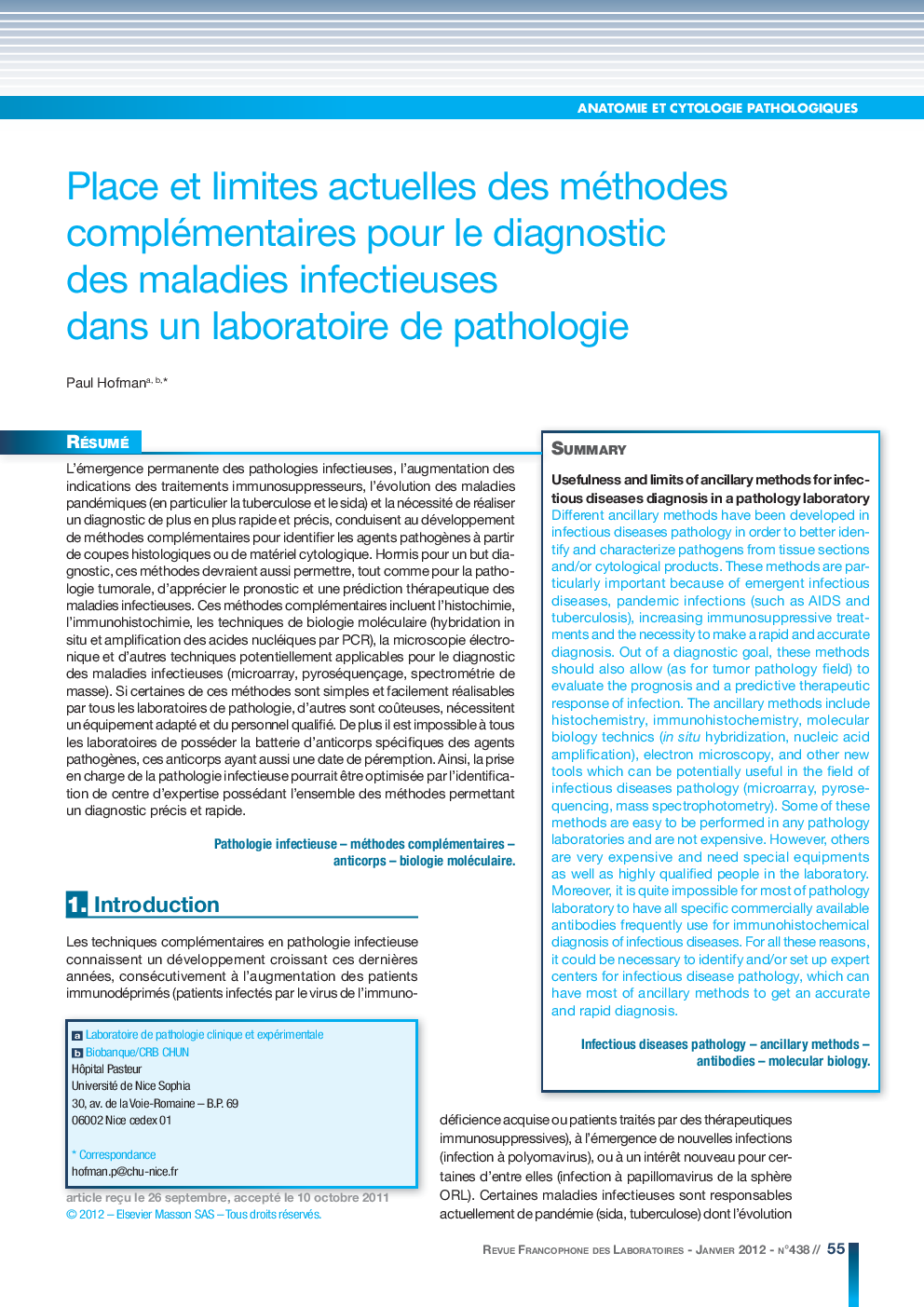| Article ID | Journal | Published Year | Pages | File Type |
|---|---|---|---|---|
| 7655034 | Revue Francophone des Laboratoires | 2012 | 8 Pages |
Abstract
Different ancillary methods have been developed in infectious diseases pathology in order to better identify and characterize pathogens from tissue sections and/or cytological products. These methods are particularly important because of emergent infectious diseases, pandemic infections (such as AIDS and tuberculosis), increasing immunosuppressive treatments and the necessity to make a rapid and accurate diagnosis. Out of a diagnostic goal, these methods should also allow (as for tumor pathology field) to evaluate the prognosis and a predictive therapeutic response of infection. The ancillary methods include histochemistry, immunohistochemistry, molecular biology technics (in situ hybridization, nucleic acid amplification), electron microscopy, and other new tools which can be potentially useful in the field of infectious diseases pathology (microarray, pyrosequencing, mass spectrophotometry). Some of these methods are easy to be performed in any pathology laboratories and are not expensive. However, others are very expensive and need special equipments as well as highly qualified people in the laboratory. Moreover, it is quite impossible for most of pathology laboratory to have all specific commercially available antibodies frequently use for immunohistochemical diagnosis of infectious diseases. For all these reasons, it could be necessary to identify and/or set up expert centers for infectious disease pathology, which can have most of ancillary methods to get an accurate and rapid diagnosis.
Related Topics
Physical Sciences and Engineering
Chemistry
Analytical Chemistry
Authors
Paul Hofman,
